The primary reason tourist come to Kenya and Tanzania is for an African safari. Home of the "Great Migration", this is the place to see one of the greatest variety of animals in the world. At any given time you can be looking at, literally, thousands of animals at one time. Kenya and Tanzania offer a number of national parks to view varying animals, but you can only see the migrtation in Masai Mara of Kenya and the Serengeti in Tanzania.
To get an idea of what you will see, take a look at these
African Pictures from this region.
Tourism has become an important part of their national economy, which is great for the tourist. As a result, the countries and their citizens invest time and resources toward enhancing the tourist experience. Hotel staff and tour guides are very kind and accomodating, and as a result make these countries among the friendliest I have visited in the world.
The "Great Migration" is the largest migration of mammals on the planet. It involves millions of animals including over a million wildebeest, nearly half a million gazelles, and about a quarter million zebras. It takes place throughtout the year in Masai Mara and the Serengeti. The location of the migratory animals depend on the time of year. From January to February, the animals are located in the eastern part of the Serengeti. In April through June, they can be found in the western region of the Serengeti. In June to July, the visit Masai Mara. The months in between they are migrating from region to region.
The most amazing time to see the migration is in August in Masai Mara, when the animals decide to head south toward Tanzania. During this time of year, you will ba able to see the famed wildebeest crossing of the crocodile filled Mara River. This time of year is also dry, which makes for ideal viewing conditions. In addition to all the migratory animals, you will find plenty of lions, cheetahs, elephants, giraffes, impalas, buffalo, etc.
While you are there, be sure to notice the details, such as how an elephant will stand between your vehicle and a youngster for protection or the zebra's formation of a line before they begin to move (see below).
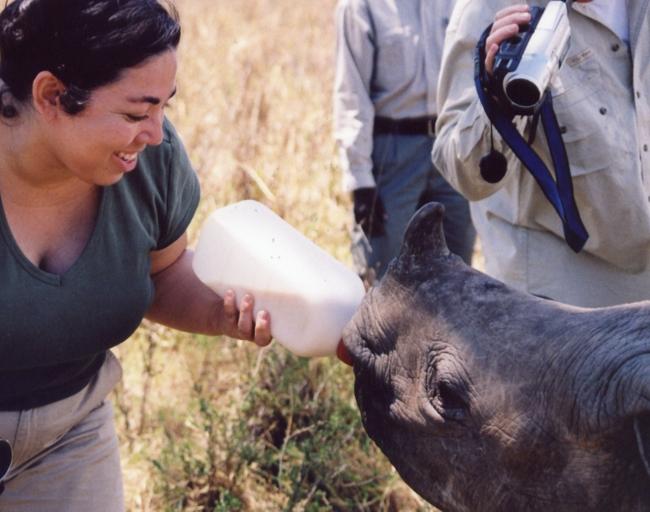 Lewa Wildlife Sanctuary is a privately run ranch located about 100 miles north of Nairobi in the heart of Kenya. It is home to a number of endangered Black Rhinos and Grevy Zebras. They have a successful breeding program with these species and even allow guests to participate in the feeding of their baby rhinos. You will also find the usual lions, cheetahs, elephants, giraffes, gazelles, impalas, cape buffalo, and ostriches. They have a team of rangers that guard the sanctuary from poachers, while monitoring the wildlife. They are closed to tourism though during their rainy season in March through mid May and October through mid December.
Lewa Wildlife Sanctuary is a privately run ranch located about 100 miles north of Nairobi in the heart of Kenya. It is home to a number of endangered Black Rhinos and Grevy Zebras. They have a successful breeding program with these species and even allow guests to participate in the feeding of their baby rhinos. You will also find the usual lions, cheetahs, elephants, giraffes, gazelles, impalas, cape buffalo, and ostriches. They have a team of rangers that guard the sanctuary from poachers, while monitoring the wildlife. They are closed to tourism though during their rainy season in March through mid May and October through mid December.
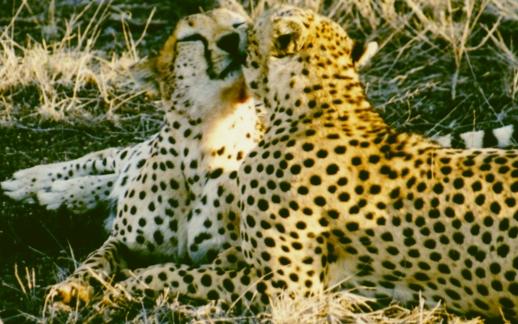 Although Lewa has a large variety of animals, their numbers are much smaller than Masai Mara or the Serengeti. However, unlike the National Parks, the drivers of the Lewa safari vehicles are allowed to go off-road if there is something interesting to see. This allows for great close-up pictures that you would normally find difficult to get in other parks. While on a game drive, there is no rule for the driver to remain on a specific route either. In many cases you can ask to see a specific animal and the driver will do his best to accomodate your request.
Although Lewa has a large variety of animals, their numbers are much smaller than Masai Mara or the Serengeti. However, unlike the National Parks, the drivers of the Lewa safari vehicles are allowed to go off-road if there is something interesting to see. This allows for great close-up pictures that you would normally find difficult to get in other parks. While on a game drive, there is no rule for the driver to remain on a specific route either. In many cases you can ask to see a specific animal and the driver will do his best to accomodate your request.
Back to Top
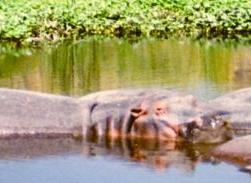 The Ngorongoro Crater in Tanzania is just east of the Serengeti and is known for its high concentration of wildlife. Natural springs provide year-round watering of vegetation creating a virtual paradise for the animals. You will find lions, hyenas, cheetahs, zebras, hippos in the hippo pond, Rhinos, wildebeest, gazelles, flamingos, and warthogs. As a result of the steep slopes on the perimeter, you will not find any giraffes and only bachelor male elephants. The amount of lions is quite impressive and can usually be seen at many different locations. The best time to catch them is at dusk when they are waking up from the day's sleep.
The Ngorongoro Crater in Tanzania is just east of the Serengeti and is known for its high concentration of wildlife. Natural springs provide year-round watering of vegetation creating a virtual paradise for the animals. You will find lions, hyenas, cheetahs, zebras, hippos in the hippo pond, Rhinos, wildebeest, gazelles, flamingos, and warthogs. As a result of the steep slopes on the perimeter, you will not find any giraffes and only bachelor male elephants. The amount of lions is quite impressive and can usually be seen at many different locations. The best time to catch them is at dusk when they are waking up from the day's sleep.
Back to Top
David Sheldrick Wildlife Trust for orphaned elephants and rhinos in Nairobi, Kenya
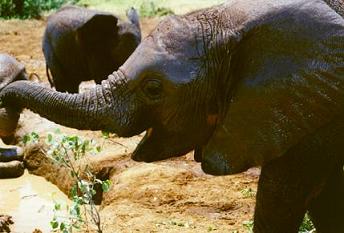 While in Nairobi, the David Sheldrick Wildlife Trust for orphaned elephants and rhinos is a great destination. Their program hand rears orphaned animals by giving them a replacement family of human keepers 24 hours a day, with the hope of returning them back to the wild. For one hour each day the gates are open to the public to see these fascinating young animals. When you arrive you are positioned behind a rope and then the fun begins. You are first introduced to their rhino which is quite large now. You get to stand just a few fet away with nothing separating you except a rope. The keepers interact with and feed the rhino, while other keepers give a brief life story of the animal.
While in Nairobi, the David Sheldrick Wildlife Trust for orphaned elephants and rhinos is a great destination. Their program hand rears orphaned animals by giving them a replacement family of human keepers 24 hours a day, with the hope of returning them back to the wild. For one hour each day the gates are open to the public to see these fascinating young animals. When you arrive you are positioned behind a rope and then the fun begins. You are first introduced to their rhino which is quite large now. You get to stand just a few fet away with nothing separating you except a rope. The keepers interact with and feed the rhino, while other keepers give a brief life story of the animal.
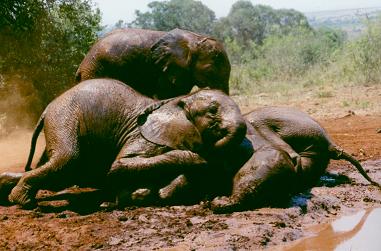 When the rhino leaves, the elephants come in line. Ranging in size from 4ft to full grown, this is an amazing site. The keepers then begin the feeding and interaction. The keepers wet the ground creating muddy puddles of water and then the elephants all start to roll around in it. They fall on each other trying to get to the puddle. It is amazing to see such large animals plopping down over and over again creating elepant piles. If that is not enough, the keepers start to kick around a soccer ball with the elephants kicking it back.
When the rhino leaves, the elephants come in line. Ranging in size from 4ft to full grown, this is an amazing site. The keepers then begin the feeding and interaction. The keepers wet the ground creating muddy puddles of water and then the elephants all start to roll around in it. They fall on each other trying to get to the puddle. It is amazing to see such large animals plopping down over and over again creating elepant piles. If that is not enough, the keepers start to kick around a soccer ball with the elephants kicking it back.
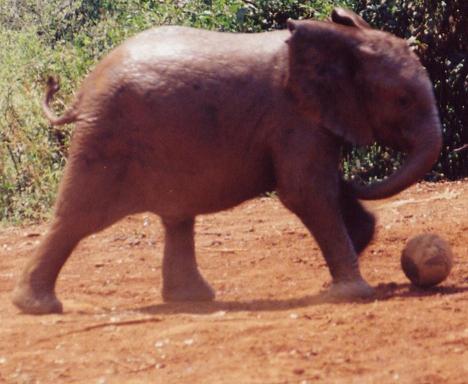 Once the excitement is complete and the elephants have eaten and thoroughly covered themselves in mud, some head toward the crowd. Most tourists run away from the muddy animals, but a reward awaits those who stick around. You are given an opportunity to touch and pet the young elephants and in many cases, the elephants choose to touch you. You may leave a little muddy, but you get to have an exchange that the young elephant initiates. There is no prompting by the keepers. The elephants simply choose to investigate the tourists. I don't know of another place in the world where you can experience this.
Once the excitement is complete and the elephants have eaten and thoroughly covered themselves in mud, some head toward the crowd. Most tourists run away from the muddy animals, but a reward awaits those who stick around. You are given an opportunity to touch and pet the young elephants and in many cases, the elephants choose to touch you. You may leave a little muddy, but you get to have an exchange that the young elephant initiates. There is no prompting by the keepers. The elephants simply choose to investigate the tourists. I don't know of another place in the world where you can experience this.
Back to Top
There are 3 main families of hotels that you will find. The Serena hotel chain is the best of the 3 (left). Their rooms have plusher beds and are better decorated with full electricity and amenities. The Sopa lodges are a close second. The only reason they are not first is their locations aren't as nice. Finally, the Wildlife lodges are for the budget traveler. With thin mattresses and power during only specific hours of the day, it is really no more than a roof over your head. Safari groups generally don’t give tourist different hotel options, but it may help you choose which safari is the better deal.
Back to Top
The best time to go on a safari in Kenya and Tanzania is between the months of July and September. This is after the rainy season in Masai Mara, where you can witness the "Great Migration" from Kenya to Tanzania. This is also a great time to see the rest of the region. The weather is not very hot, despite the proximity to the equator. It also is dry, so you can pop open the top of your safari vehicles without any worries about getting showered upon.
Back to Top
What to Take
The most important thing to remember is that you are near the equator and will feel the effects of the sun often. As a result, one should remember to take a hat, sunscreen, and sunglasses. With open roofs on the safari vehicles, these items are a must. A straw hat is a second choice, not a first, because the hat should be able to block out the sun and not simply filter it. Sunglasses should cover a large area and sunscreen should have an SPF as high as you can find. If you are traveling near the rainy season, insect repellent will help prevent a mosquito attack.
Clothing should be light and airy made from materials such as cotton or linen. It may be cold in the mornings and hot in the day so take several layers. A day’s clothes may include a t-shirt, a twill long sleeve shirt, a thin jacket, and cotton pants. There is generally not much hiking involved in a safari, so tennis shoes are usually enough. Finally, where clothing that are tan, brown and beige in color. The objective is to get as close to the animals as possible. Bright colors make your presence well known and drive animals away. Stay away from the colors you will not usually see in the wild, such as any pastel color or white.
Take a good camera. What you will see will be unbelievable. It would be a shame if you paid thousands of dollars for a safari and took a $50 camera. Now is the time to upgrade your camera. Try to get a camera the can zoom in closely. Binoculars are also a good idea. Sometimes there is action in the distance, beyond a camera’s reach, and having a nice set of binoculars do come in handy.
How to Book
There are a number of places to book an African safari. The first place one should check is your local zoo. The zoo will generally send a representative with you, while finding a competitive rate. This will also support your local zoo. A company that come highly recommended is Thomson Safaris. You could also just click on opne of our advertisers to the right. For the do-it -yourselfers, you can check with the Kenya Association of Tour Operators or the Tanzania Association of Tour Operators to find regulated and reputable safari companies. Whatever company you choose, be sure you investigate the itinerary and be sure you know what you are signing up for. Look at details, such as the mode of transportation and distance from one location to the next. You may find something that is not quite what you are looking for.
Back to Top
